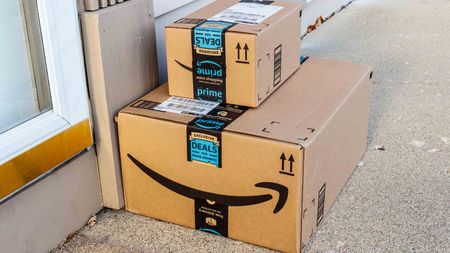6 Things You Need to Know About Airline Miles
We help you untangle the details of frequent-flier programs and make your points work for you.
By Michael Stratford
1. Pick the right program. Before you sign up, assess your flying habits. If you fly frequently, you want a relationship with the airline that offers you the most convenient flights. Generally, it’s best to pick the largest carrier at your hometown airport. If you’re not sure which one it is, check the airport’s Web site to find the airline that occupies the largest number of gates. If you rarely fly, you might want to opt for a rewards card instead. These cards tend to offer lower rates, let you choose the airline and don’t have blackout dates.
2. Put all your eggs in one basket. Diversification is a good investment strategy, but it’s not a sound practice for frequent-flier miles. Because the miles or points you earn in one program usually can’t be exchanged or transferred to others, it often makes sense to participate in just one program. That way, you earn the most usable miles and avoid small balances spread over multiple accounts. It typically takes about 25,000 miles to redeem a flight within the continental U.S.

Sign up for Kiplinger’s Free E-Newsletters
Profit and prosper with the best of expert advice on investing, taxes, retirement, personal finance and more - straight to your e-mail.
Profit and prosper with the best of expert advice - straight to your e-mail.
3. Bag the miles and buy the ticket. Despite your affinity for one airline, if you can find a cheaper flight on another, take it. (Use sites such as Kayak.com and Airfarewatchdog.com to compare prices.) “It rarely ever makes sense to overpay to earn extra miles,” says Tim Winship, publisher of FrequentFlier.com. Pay extra only if the miles you earn on the more expensive flight cost less than their redeemable value (a frequent-flier mile is worth, on average, 1.2 cents). Plus, you may still be eligible to earn miles in your program through partner airlines.
4. Keep your miles alive. Every program has its rules, but miles typically start to expire if your account has been inactive for 18 to 24 months. You can, however, reset the clock. “Earning a mile or burning a mile usually gives you another 18 months,” says Winship. Aside from booking a flight, the easiest way to ensure that you hold on to your miles is to sign up for an airline credit card that’s tied to your program and use it.
5. Rack up miles on the ground. You should also be aware of each airline’s rewards-program partner companies. The largest programs—those sponsored by Delta, United and American—list thousands of partners on their Web sites, including retailers and hotel chains. Also take advantage of your program’s “mileage mall,” a network of online retailers that offer reward miles, and use your program-affiliated credit card to make purchases at these stores.
6. Know when to fold ’em. Business passengers are usually interested in turning their miles into in-flight perks and upgrades. Casual fliers are all about free flights. Because airlines have started filling their planes to capacity, the supply of rewards seats is more limited. But it’s still possible to snag a free flight, especially if you book ahead (as many as 330 days prior to departure) or late (two weeks before). Look for midweek flights during off-peak periods, and avoid weekends and holidays. Another strategy is to fly from or to a nearby airport. Airlines are encouraging participants to redeem miles for rental cars, free hotel stays and consumer electronics. But before you take them up on the offer, do the math: Nonflight rewards usually offer a lower return on your investment.
Get Kiplinger Today newsletter — free
Profit and prosper with the best of Kiplinger's advice on investing, taxes, retirement, personal finance and much more. Delivered daily. Enter your email in the box and click Sign Me Up.
-
 Expiring Business Tax Breaks And Trump's Tax Plan
Expiring Business Tax Breaks And Trump's Tax PlanThe Tax Letter Four important business tax breaks are likely to be a part of President Trump's tax plan. We'll break them down for you.
By Joy Taylor Published
-
 Stock Market Today: Trump's Tariff Reversal Can't Save Stocks
Stock Market Today: Trump's Tariff Reversal Can't Save StocksPanic selling sent the Nasdaq Composite into correction territory, while the Dow and S&P 500 suffered notable losses.
By Karee Venema Published
-
 Roth IRA Contribution Limits for 2025
Roth IRA Contribution Limits for 2025Roth IRAs Roth IRA contribution limits have gone up. Here's what you need to know.
By Jackie Stewart Last updated
-
 Four Tips for Renting Out Your Home on Airbnb
Four Tips for Renting Out Your Home on Airbnbreal estate Here's what you should know before listing your home on Airbnb.
By Miriam Cross Published
-
 Five Ways to a Cheap Last-Minute Vacation
Five Ways to a Cheap Last-Minute VacationTravel It is possible to pull off a cheap last-minute vacation. Here are some tips to make it happen.
By Vaishali Varu Last updated
-
 How to Figure Out How Much Life Insurance You Need
How to Figure Out How Much Life Insurance You Needinsurance Instead of relying on rules of thumb, you’re better off taking a systematic approach to figuring your life insurance needs.
By Kimberly Lankford Last updated
-
 Amazon Big Deal Days Is Coming! We’ve Got All the Details
Amazon Big Deal Days Is Coming! We’ve Got All the DetailsAmazon Prime To kick off the holiday season with a bang, Amazon Big Deal Days runs Tuesday, October 8 and Wednesday, October 9.
By Bob Niedt Last updated
-
 How to Shop for Life Insurance in 3 Easy Steps
How to Shop for Life Insurance in 3 Easy Stepsinsurance Shopping for life insurance? You may be able to estimate how much you need online, but that's just the start of your search.
By Kaitlin Pitsker Last updated
-
 Five Ways to Shop for a Low Mortgage Rate
Five Ways to Shop for a Low Mortgage RateBecoming a Homeowner Mortgage rates are high this year, but you can still find an affordable loan with these tips.
By Daniel Bortz Last updated
-
 Retirees, It's Not Too Late to Buy Life Insurance
Retirees, It's Not Too Late to Buy Life Insurancelife insurance Improvements in underwriting have made it easier to qualify for life insurance, which can be a useful estate-planning tool.
By David Rodeck Published